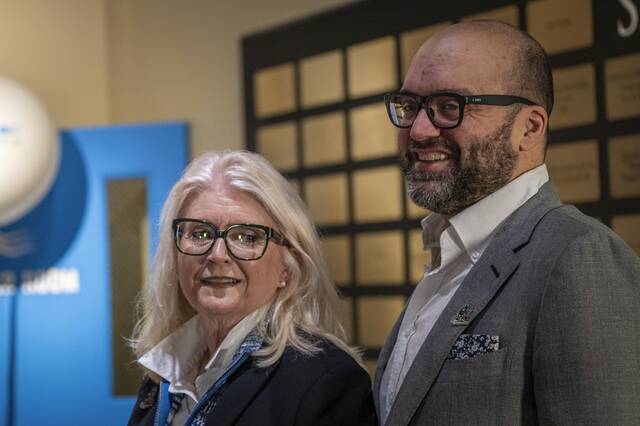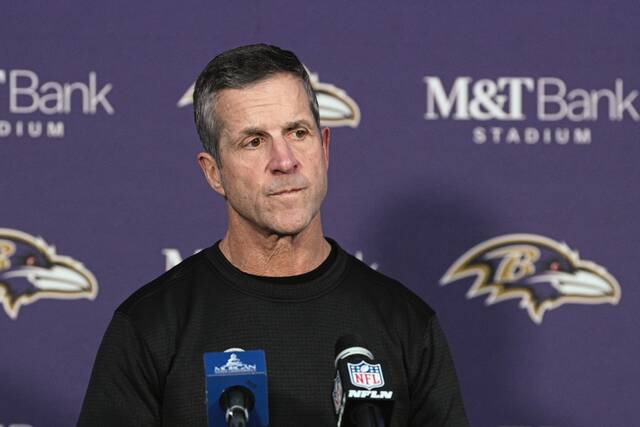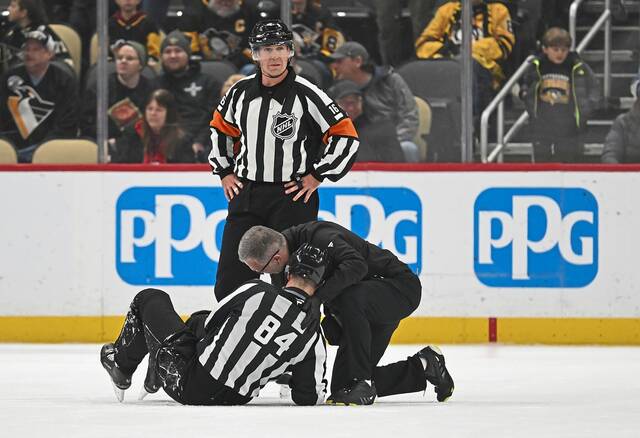In explaining the Pittsburgh Penguins impotent offensive production, it’s easy to point to the New York Islanders and the Penguins’ obvious troubles in solving their first-round opponent’s commitment to defense.
But in reality, the Penguins’ struggles with scoring goals extend well back beyond the start of the postseason. Though winning masked the problem, the Penguins scored just 25 goals over the final 11 games of the regular season; in their final six games against playoff teams, they scored just 11 goals (1.83 per game).
In that context, producing five goals over the first three games (1.67 per game) of the series against the Islanders is largely just more of the same. In 14 games since March 16, the Penguins are averaging 2.14 goals per game — 1.78 against playoff teams.
All that matters now if the Penguins are going to extend their season is scoring enough in Game 4 on Tuesday night at PPG Paints Arena. That proved difficult to the Penguins during the first three games of the series, all losses.
“The challenge is the Islanders — that’s part of their gameplan — they have numbers back,” Penguins coach Mike Sullivan said. “We knew that going in. They were the No. 1 team in the league in the least amount of odd-man rushes against in the regular season. I think there’s a direct correlation there to keeping your goals-against down. Some of the better-quality chances that occur in the game occur off the rush.
“We have to be able to create offense different ways. That’s been the challenge. That will continue to be the challenge moving forward.”
Of the Penguins’ five goals in the series, three were generated by shots from defensemen from the point — off the sticks of Justin Schultz (Game 1) and Erik Gudbranson (Game 2) and one that was deflected by Garrett Wilson after a shot from Marcus Pettersson. Another (Evgeni Malkin in Game 1) came on the power play.
That leaves just one goal that came from a forward during any sort of traditional offensive flow. Just three Penguins goals over the first three games of the series came at 5-on-5.
“We knew going into this series that they were going to be low-scoring games,” Sullivan said. “You look at the way the games have been played, there’s been a real fine line between winning and losing in all the games. There are areas of our game where we know we can be better that give us a better chance to win.”
So, what are those targeted areas for improvement? Sullivan played coy, allowing only that they studied them on film Monday during a session at UPMC Lemieux Sports Complex after on-ice practice was canceled.
The only hints dropped from a small group of players who were available to the media indicated not a tactical strategy but a more pragmatic (if less controllable) one.
“It starts with playing with the lead,” defenseman Brian Dumoulin said. “If we do that and throughout the game if we can carry a lead, I think that will definitely benefit us.”
The Penguins have held a lead for 3 minutes and 17 seconds among the 184-plus minutes of action in the series.
Under coach Barry Trotz, New York is constructed not as a team intended to erase deficits but one that can more effectively choke down on an opponent that’s behind. The Penguins have a belief if they can turn the tables and get a lead, that will snowball to their advantage in regards to style of play.
“We can look at every game and say that there’s different points where if we would have scored on a certain play maybe that opens things up and they’re not defending quite as hard and they open it up and we get another one,” Crosby said. “Things can change pretty quickly, and for that reason, that’s why we believe that if we come in with the right mindset (Tuesday) we can get it done.”















